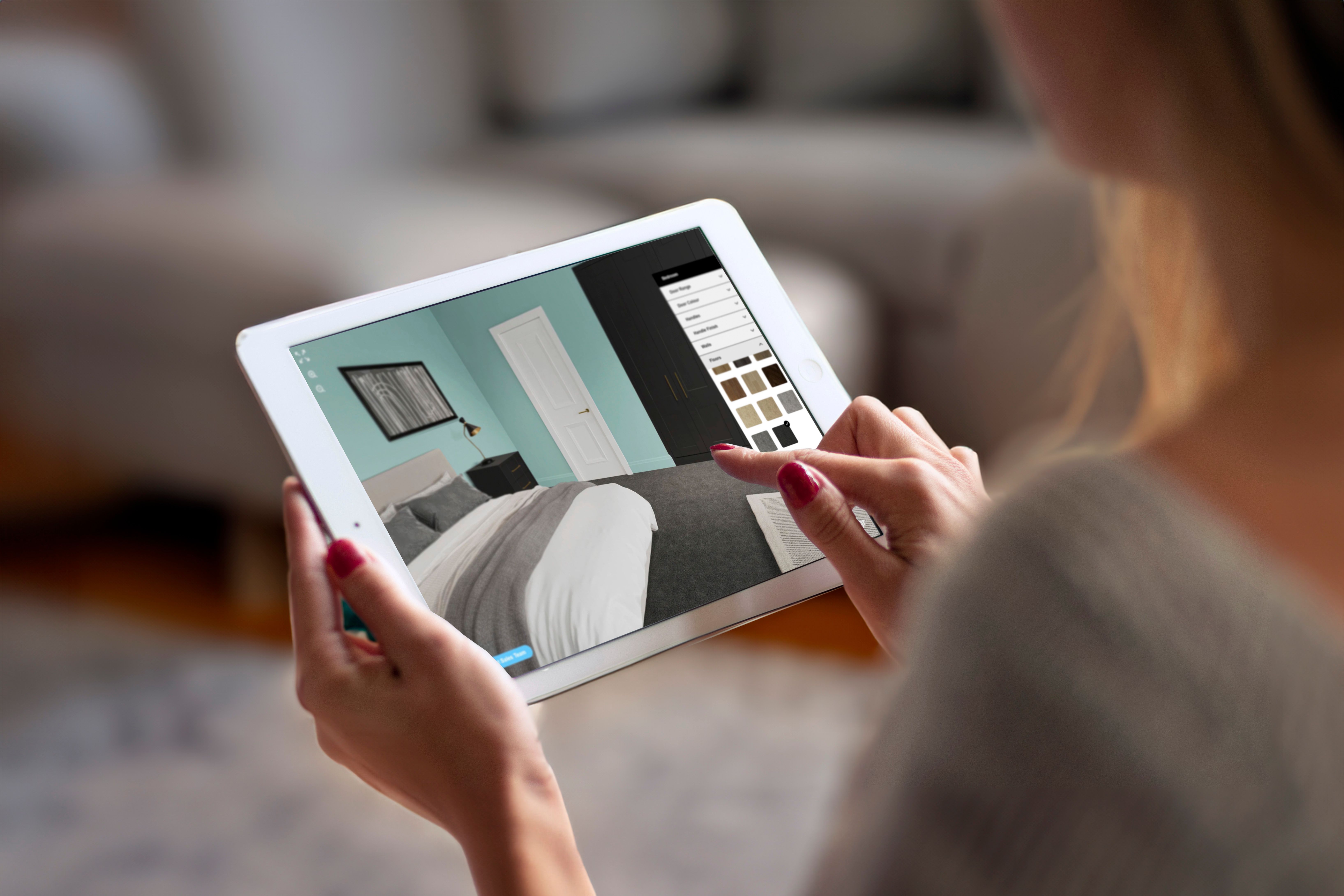The online retail landscape is changing. Consumers are becoming increasingly reliant on using digital solutions to cater for their buying journey - from research through to purchase.
However, many retailers miss the mark with visually poor solutions or overly complicated planning tools, putting buyers off in the process.
When it comes to interactive tools for customers, there are generally two options; online planners and configurators (or visualisers). Both options offer very different results. Let's look at the differences.
Online planning tools have been around in the interior retail space for some time. They offer a means of designing your exact space and detail every conceivable furniture arrangement until you have fully realised an accurate design. While generally considered useful, the devil is in the detail with online planning tools and the process can often be a time-consuming process with many options creating a difficult and, frankly, annoying experience for customers.
Without prior knowledge of the tool you're expected to use, it can be difficult to truly realise your vision of your ideal space. Furthermore, many planning tools produce rather lifeless renditions of the real thing. The whole process can leave customers with a rather lacklustre experience and not what digitally-native generations have come to expect. This can be a bit of a nightmare situation for retailers who end up with a tool that acts more as a sales blocker rather than a sales enabler.
Flipping the script book around, we have visualisers and configurators.
These tools offer a refreshing alternative to the customer experience by providing customers with an inspiration tool, rather than a clunky planner. Configurators and visualisers feature highly sophisticated curated product ranges that are crafted specifically to give the customer an exciting online experience. The range of what can be applied to visualiser tools is pretty much unlimited, with many different options including wide ranges of furniture, hardware, surfaces, fittings, fixtures and soft furnishings.
Adding to the appeal of this option is the generally low complexity when it comes to using a more intuitive tool such as a visualiser. Customers can start trying out ideas immediately in a universally more accessible process. Onfigr's Pano Visualiers, for example, allow the user to create their ideal space, save their design and send it to their email - this gives a huge option for customers to create the foundation for their purchase effectively, without any labour-intensive activities.

Complexity Equals Frustration
An overview from the home interiors industry is that complex design tools are increasingly too slow and complicated for a time-poor consumer; especially when trying to use them on a phone or tablet.
Using planning tools effectively isn’t immediately obvious to the non-specialist. This barrier to success means customers who are looking for ideas and inspiration are left stuck in the mud of tricky software. When it comes to a good online experience, this option is playing hardball.
It's not just the consumer that faces this challenge. As e-design becomes ever more prevalent, many interior designers are facing a similar challenge of overly complicated tools that deliver disappointing results.
As we continue to live in an increasingly visual age, people buy with the eye. Selling high-quality products with low-quality visuals, an inherent trait of buying interior spaces online, is a big challenge for many brands.
We all know how important staging and styling your retail space is to create an elevated user experience, so having the support of a virtual design space that doesn't look like a stick man drawing is a great way to convert an enquiry into a sale.

Confidence Begets Conversation
It's an age-old saying that confidence begets confidence. If a retailer has the confidence in their products and services to allow the end user to see all elements of the kitchen up close and personal - from brassware to appliances, flooring to furniture - it makes sense to showcase them to their best possible advantage. At the end of the day, design is a means of creatively solving a problem or challenge. Your online space should reflect this.
A few tips - look out for configurators which are photorealistic, deliver fast load times, greater personalisation, and enable deeper consumer insight. Knowledge is power and your ability to inspire confidence in your visitors goes even further when you have their buying intentions in view. - Something visualisers do very well.

The need for every business to deepen its understanding of the customer is a crucial goal for sales and marketing teams. Retail brands need to have their finger on the pulse when it comes to consumer appetites and the market is demanding a greater connection to their product as well as expecting retailers to be prepared to offer an experience that is personal to them.
This requires detail, data and a clear focus on the user experience. Planning tools cannot meet these needs, but configurators and visualisers can. As an entry point within the sales journey, there is no better option.
